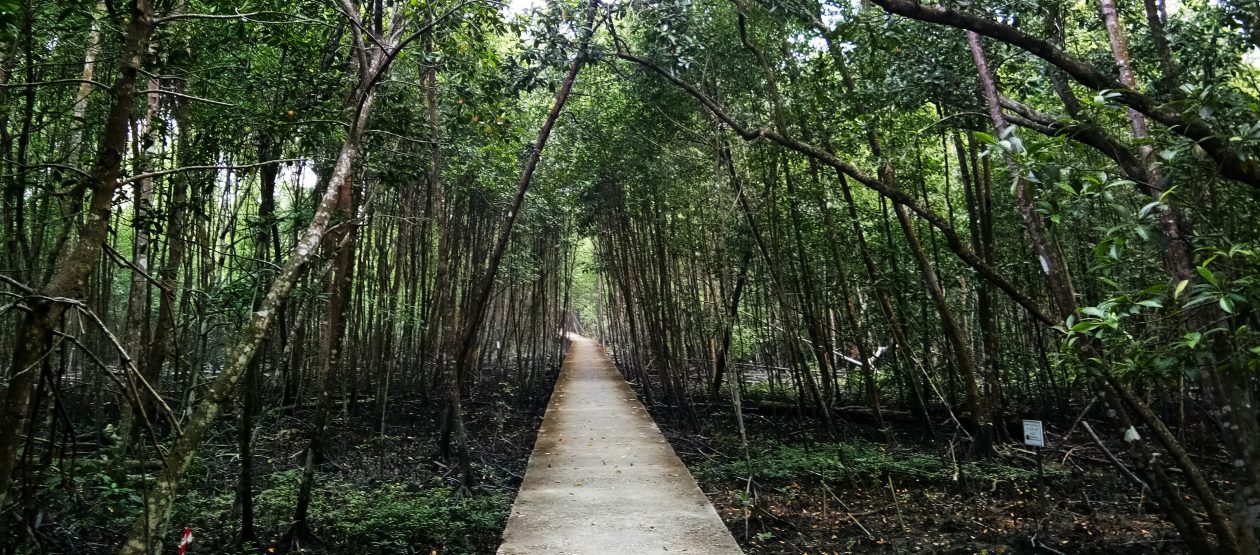CLICK BELOW FOR AUDIO GUIDE
Terminalia catappa, (Local name: ketapang) also known as sea almond, is a tall tree up to the range of 20 to 35 metres high (66 to 115 ft.). The tree often has buttress roots with grey, fissured and slightly flaky bark. It has a large spatula-shaped (15 to 30 cm long, 9-18 cm wide) thin leathery leaves, arranged in a spiral at the tip of the twig. Its young leaves are reddish.

Terminalia Catappa has many tiny white flowers. Instead of having petals and fragrance like any commonly found flowers, it has star-shaped calyx emerge on long spikes (10-12 cm long) and is said to smell bad.

It bears almond-shaped fruits of approximately 4 to 8 cm long in clusters. The Sea Almond fruits are green ripening yellow. It has a thick, leathery, corky outer layer enclosing air cavities with a hard and thick stone in the center. Inside the stone is a sliver of edible kernel composed of tightly coiled seed-leaves of the embryo. In Kuala Selangor Nature Park, monkeys tend to be found near this tree as Sea Almond fruits are part of the monkeys’ diet as its nut kernel can be eaten raw.

Terminalia Catappa has been recognised for its medicinal uses and benefits. Numerous pharmacological investigations have confirmed this plant’s ability to exhibit antimicrobial, anti-inflammatory, antioxidant activities. Its leaves have an antibacterial effect due to the release of tannic and humic acid. For instance, it is commonly used by the aquarists in their aquariums to promote fish health and provide a calming effect. It can be applied to treat rheumatic joints too. Juice from young leaves is said to cure headaches and colic. Its bark is to treat dysentery. However, its unripe fruits contain tannin and terminalin, which are toxic to animals like cattle and sheep when eaten.
Terminalia Catappa can mainly be found in the tropical regions of Asia, Africa, and Australia. It grows well in subtropical and tropical climates. To date, this widely known ornamental tree in tropical regions is found to be near threatened.
